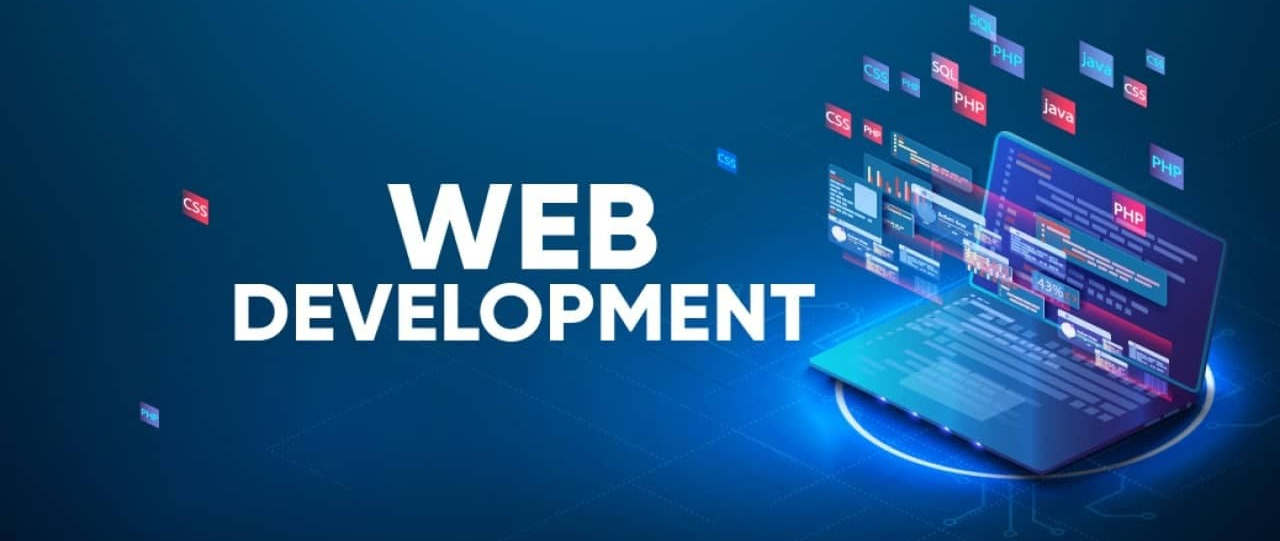Introduction
Web development is the backbone of the internet, enabling businesses, individuals, and organizations to create dynamic and interactive websites. In today’s digital age, a well-developed website is essential for establishing an online presence, engaging users, and driving business growth.
From simple static web pages to complex web applications, web development has evolved significantly, incorporating the latest technologies such as AI, cloud computing, and responsive design. This guide explores the fundamentals of web development, the different types, tools, trends, and best practices for creating a successful website.
What is Web Development?
Web development refers to the process of building, designing, and maintaining websites. It includes:
- Frontend Development – Focuses on the visual and interactive aspects of a website.
- Backend Development – Manages the server, database, and application logic.
- Full-Stack Development – Involves both frontend and backend development.
Web development also involves aspects such as security, performance optimization, and user experience (UX) design to ensure websites are fast, secure, and easy to use.

Types of Web Development
1. Frontend Development
Frontend development is responsible for what users see and interact with on a website. It includes:
- HTML (HyperText Markup Language) – Structures the content of web pages.
- CSS (Cascading Style Sheets) – Styles the appearance of a website.
- JavaScript – Adds interactivity and dynamic features to web pages.
Popular frontend frameworks include React.js, Angular, and Vue.js, which help developers build modern, responsive web applications.
2. Backend Development
Backend development handles the server-side logic, databases, and APIs that power web applications. It includes:
- Programming Languages – PHP, Python, Node.js, Ruby, Java, C#.
- Databases – MySQL, PostgreSQL, MongoDB, Firebase.
- Server Management – Apache, Nginx, cloud hosting solutions.
Backend development ensures websites function properly, manage user data, and handle requests securely.
3. Full-Stack Development
A full-stack developer is proficient in both frontend and backend technologies, capable of building an entire web application from start to finish. Full-stack frameworks like MEAN (MongoDB, Express.js, Angular, Node.js) and MERN (MongoDB, Express.js, React, Node.js) are widely used.
4. CMS Development
A Content Management System (CMS) allows users to build and manage websites without coding. Popular CMS platforms include:
- WordPress – Ideal for blogs, business websites, and e-commerce.
- Shopify – Best for online stores and e-commerce solutions.
- Drupal & Joomla – Suitable for enterprise-level websites.
5. E-Commerce Development
E-commerce web development involves building online stores that support secure transactions, product catalogs, and user-friendly navigation. Popular e-commerce platforms include Magento, WooCommerce, Shopify, and OpenCart.
6. Progressive Web Apps (PWAs)
Progressive Web Apps provide a native app-like experience on the web. They offer fast loading speeds, offline functionality, and push notifications, making them an excellent alternative to mobile apps.
Web Development Trends in 2025
AI-Powered Websites – Chatbots, smart recommendations, and automated content creation.
Voice Search Optimization – Websites optimized for voice assistants like Alexa and Google Assistant.
Dark Mode UI – More websites adopting dark mode for better user experience.
WebAssembly (WASM) – Running high-performance applications in the browser
Serverless Architecture – Reducing server management complexity with cloud-based solutions.
Motion UI & Micro-Interactions – Enhancing UX with subtle animations.
These trends are shaping the future of web development, making websites faster, smarter, and more user-friendly.
Essential Tools for Web Development
- Code Editors – VS Code, Sublime Text, Atom.
- Version Control – Git, GitHub, GitLab.
- Frameworks & Libraries – React.js, Angular, Vue.js (frontend); Django, Express.js, Laravel (backend).
- Database Management – MySQL, PostgreSQL, Firebase.
- Testing Tools – Jest, Mocha, Selenium.
- Deployment & Hosting – AWS, Netlify, Vercel, Heroku.
Using the right tools helps streamline the development process and improve productivity.
Best Practices for Web Development
- Mobile-First Design – Ensure websites are fully responsive and work seamlessly on mobile devices.
- SEO Optimization – Optimize for fast loading speeds, proper meta tags, and structured data.
- Security Measures – Implement SSL certificates, firewalls, and secure authentication.
- Accessibility Standards – Make websites inclusive for all users, including those with disabilities.
- Performance Optimization – Compress images, use caching, and minimize HTTP requests.
- Regular Updates & Maintenance – Keep software, plugins, and frameworks up to date.
Following these best practices ensures high-quality, secure, and scalable websites.
Web Development Process: Step by Step
Planning & Research
- Define the website’s goals, target audience, and features.
- Conduct competitor analysis.
UI/UX Design
- Create wireframes and mockups.
- Focus on user experience, navigation, and responsiveness.
Development
- Frontend and backend coding.
- Integration of APIs and databases.
Testing & Debugging
- Cross-browser and device testing.
- Security and performance testing.
Deployment & Launch
- Deploy the website on a secure hosting platform.
- Optimize for SEO and analytics tracking.
Maintenance & Updates
- Regular security patches and content updates.
- Monitor site performance and user feedback.
A structured web development process ensures the final product is efficient, user-friendly, and reliable.
Conclusion
Web development is a constantly evolving field that plays a crucial role in shaping the digital world. From simple websites to complex web applications, businesses need to leverage the latest technologies and trends to stay competitive.
By following best practices, using the right tools, and staying updated with emerging trends, developers can create powerful, scalable, and user-friendly websites that drive success. Ready to build the future of the web? Start learning, experimenting, and innovating today! 🚀



